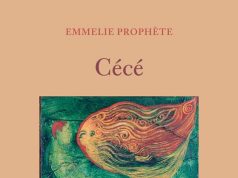

“I’ve heard of a mango festival, a breadfruit festival, a chocolate festival. Why not pigeon peas?” Great article about the versatility of pigeon peas and culinary ingenuity. Here are excerpts from a guest contributor for Global Voices.
When I first met Florence Warrick-Joseph, there were two things I didn’t know. One, we were related in that pumpkin vine way only Caribbean people can be. Two, the doubles I had just bought from her at a pop-up market had a surprise in them.
It wasn’t the comforting warmth of a bara hot out of the box, leaking through greaseproof paper. It wasn’t the silken tear of teeth into that just-fried pillowy goodness, which, if you’re lucky, will still hold a hint of the crackle of oil.
No, it wasn’t that.
It was the filling. Cucumber, check. Sweet sauce, check. The heady bouquet of garlic, cumin and spices was there. But there was something different in the mouth feel. It wasn’t the melt-in-your-mouth consistency of the channa that makes doubles a national byword in Trinidad and Tobago. Tasty, yes … but different.
[. . .] In 2014, Warrick-Joseph, a retired registered nurse, decided to do an event management course. Her lecturer asked the cohort to stretch themselves beyond the ho-hummery of birthday parties and christenings for their practicum. She was an avid planter of pigeon peas, one of the many members of the Upper Cemetery Street Residents’ Association in Diego Martin, to do so. They had a bumper crop that year. [. . .] So I said, thinking out of the box, we could have a pigeon peas festival.” [. . .]
Nothing in the flavour screamed pigeon peas. That was more in the texture and the solidity with which it sat in my stomach. One muffin felt like a full meal, which led me to ask about the nutritional benefits of the pigeon peas substitution. I found out that, among other things, they were high in potassium and fibre, and were good for gut flora, diabetics, and women who wanted to lose weight.
In fact, it was trying to cater to customers who wanted healthier alternatives to doubles that prompted Warrick-Joseph to come up with a recipe for gluten-free bara, made with pigeon pea flour: “The reason for the switch was that people felt they wanted gluten-free. There was a group of people that was intolerant to normal flour.”
It was a three-flour mix, including the ground pigeon peas, which resulted in a tacky, sticky sort of dough that was allowed to rest for about half an hour. While it did that, Warrick-Joseph warmed the oil in which she would fry them later and prepared the pigeon peas filling. [. . .]
Read full article at https://globalvoices.org/2025/09/24/how-one-community-in-trinidad-tobago-pushed-the-culinary-boundaries-of-pigeon-peas/
“I’ve heard of a mango festival, a breadfruit festival, a chocolate festival. Why not pigeon peas?” Great article about the versatility of pigeon peas and culinary ingenuity. Here are excerpts from a guest contributor for Global Voices. When I first met Florence Warrick-Joseph, there were two things I didn’t know. One, we were related in






